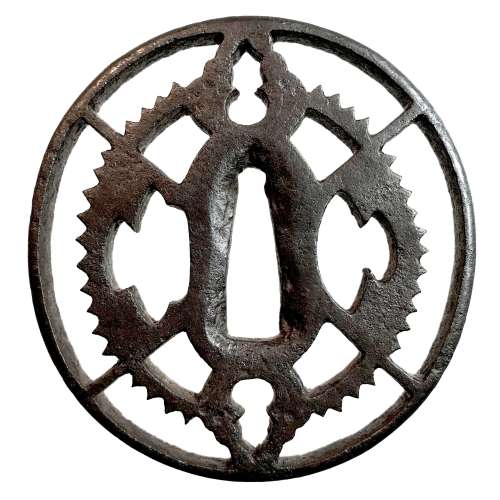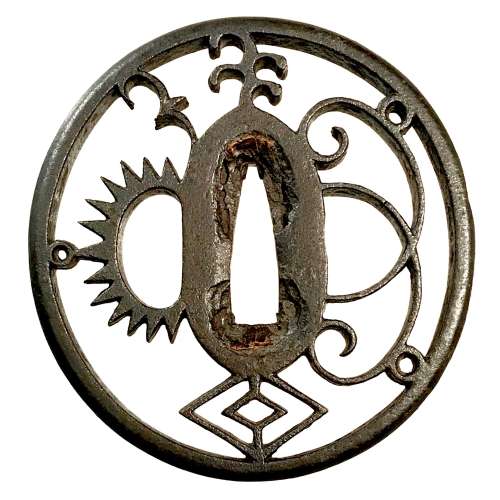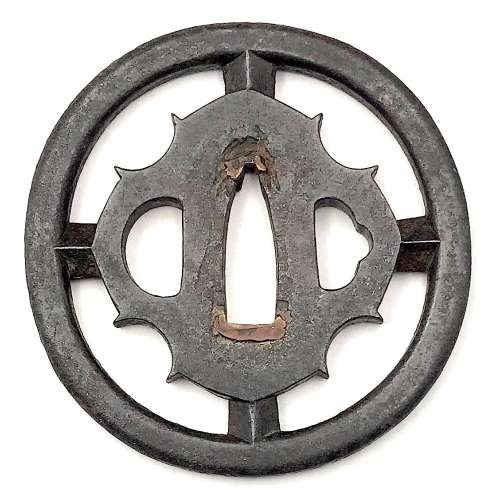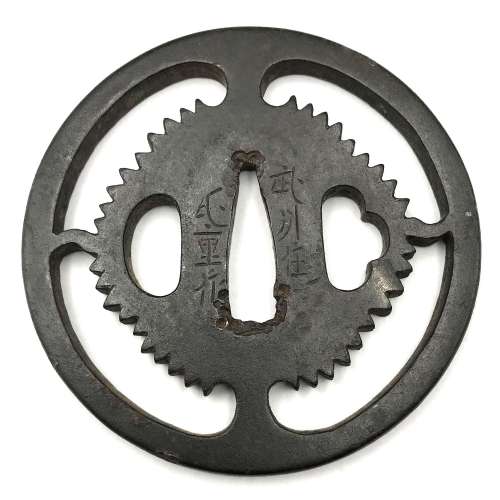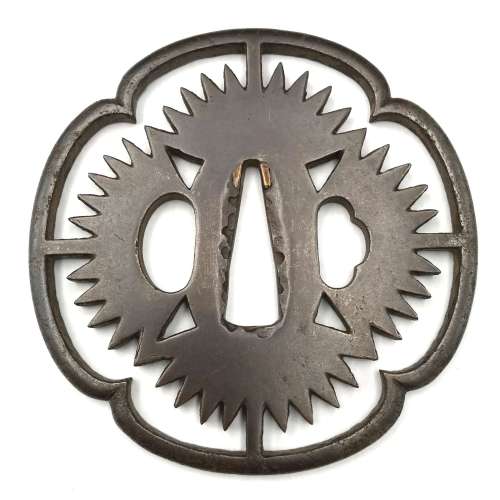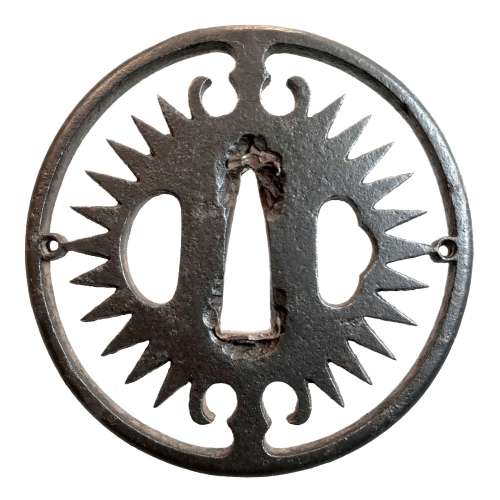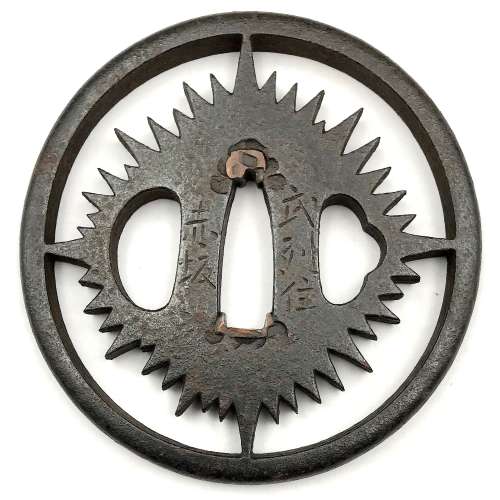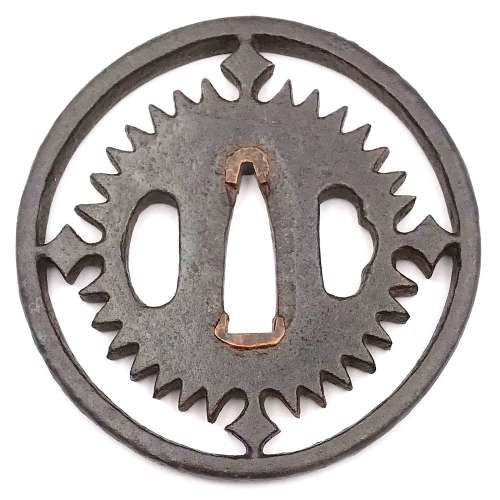Iron tsuba of round form with slanting rays of light (
shakoh) Christian motif (
Jesuit's IHS symbol) in openwork (sukashi). Traditional description of this kind of design is called "tokei", or "clock gear".
Edo period.
Size: 83.4 x 83.1 x 4.4 mm
Signed Bushū-jū Ujishige saku (武州住氏重作) [Markus Sesko]. Ujishige (died 1677), 3rd generation of the Katsuki-Gondayu line; 1st gen. Ujiie came from Kyoto to Kaga to work for the Maeda family. There was another Ujishige, 4th generation Kaneko (?), who died in 1867 [M. Sesko, Genealogies...], but this tsuba looks a bit earlier than that. This particular Ujishige states in his signature that he is from Bushū, or Musashi Province, modern Tokyo Metropolis. He might have moved from Bushū to Kaga, of course. There is no artist with the name Ujishige in Bushū-Ito School anyway.
For information regarding
shakoh tsuba see article 'Kirishitan Ikenie Tsuba by Fred Geyer at Kokusai Tosogu Kai; The 2nd International Convention & Exhibition, October 18-23, 2006, pp. 84-91.







